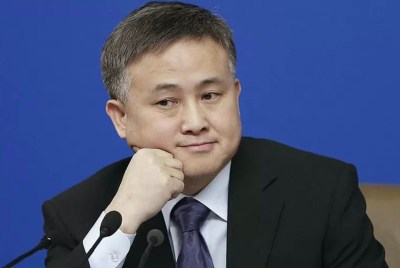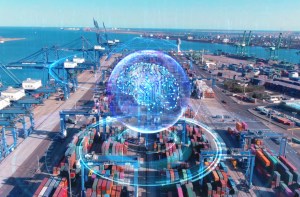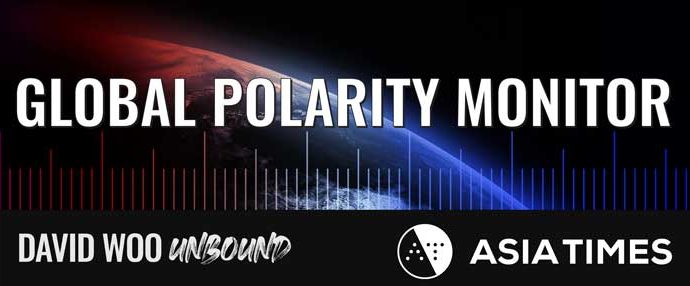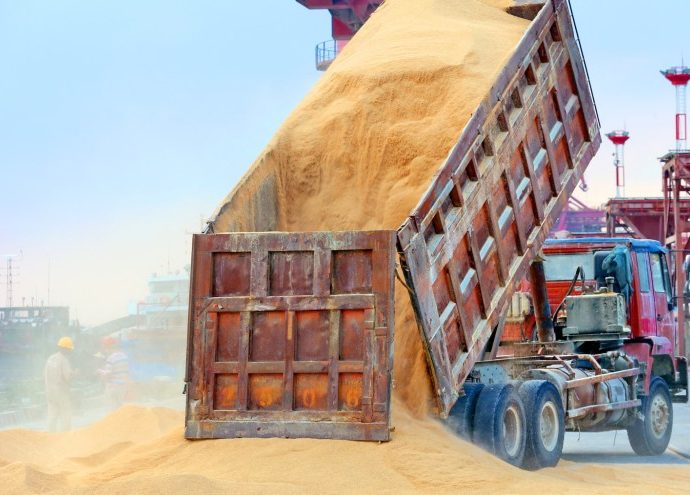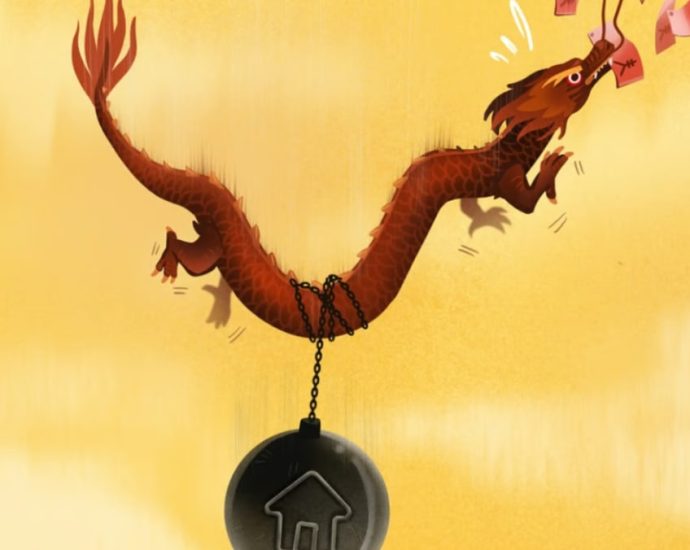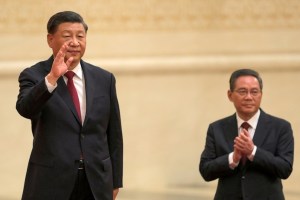Crisis-hit China is right to avoid Japanâs failed example
TOKYO — As economists weigh the odds of China becoming Japan, many are drawing the wrong lessons from Tokyo’s lost decades.
The common misconception about the deflationary funk that relegated Japan to No 2 in Asia is that the central bank was too conservative in efforts to revive growth. It’s the opposite, really.
Though the Bank of Japan (BOJ) eased plenty in the early- to mid-1990s, it’s the last 24 years of zero interest rates and quantitative easing that sealed the nation’s fate. All of that monetary stimulus, paired with a fiscal-loosening boom, re-inflated one asset bubble after another.
Each time one of those bubbles burst or fizzled, the BOJ was keen to blow new ones. All those overlapping bubbles, propped up year after year, created the illusion of recovery.
It was all a mirage. Wages flatlined, innovation and productivity stagnated and the animal spirits that once wowed the world went dormant.
That’s because the BOJ’s steroids warped incentives across the economy. Why do the hard work of reinvention, recalibrating, rethinking and reforming when the central bank has your back day in, day out?
So, when economists urge the People’s Bank of China (PBOC) to fight deflation with a monetary easing onslaught, they’re ignoring the examples the BOJ continues to serve up even today, argues independent economist Andy Xie.
In a series of writings, including in the South China Morning Post, and media interviews, including with Peter Lewis’ Money Talk Podcast, Xie has been making the case one can only hope that PBOC Governor Pan Gongsheng is heeding.

“Market-driven restructuring is driving China’s deflation,” argues Xie, formerly a top Morgan Stanley economist. “It leads to more efficient allocation of resources and greater purchasing power for consumers.”
Xie continues that “if China can resist the reflationary pressure from those who lose out due to the deflation of property bubbles, a healthier and more sustainable growth cycle is coming, which will turn China into a high-income country.”
The thing about so-called “Japanification,” Xie explains, is that Japan’s malaise was less about the level of the money supply than a slow-moving economic system unable to see that its competitiveness was waning.
“As the generation of entrepreneurs who built Japan’s economy retired in the late 1980s and early 1990s,” Xie writes in SCMP, “their successors have behaved like bureaucrats, hanging onto what they have. They were paralyzed as Japan’s neighbors peeled off its industries one by one with better tech and lower prices.”
By 1999, when then-BOJ governor Masaru Hayami slashed rates to zero and began pioneering QE, a first for a Group of Seven nation, several years of political apathy were already stymying what was then Asia’s biggest economy.
Around 2011, when China first surpassed Japan in gross domestic product (GDP) terms, Tokyo had a chance to reboot — an opportunity to rekindle its entrepreneurial mojo. It doubled down on monetary easing instead.
In 2013, Haruhiko Kuroda took the reins at BOJ with a mandate to supersize Tokyo’s QE experiment. Kuroda did just that, hoarding government bonds and stocks as never before. By 2018, the BOJ’s balance sheet topped the size of Japan’s US$5 trillion economy.
Yet even this asset-buying onslaught failed to end deflation. Vladimir Putin’s war in Ukraine did that with its resulting spikes in energy and food costs. Wages didn’t respond the way Kuroda and the ruling Liberal Democratic Party expected.
There was a moment of optimism earlier this year when annual Shunto negotiations with unions resulted in the biggest pay hikes in 30 years. But great uncertainty about Japan’s 2024 prospects means the average 3.91% wage hikes might not live on.
As economist Richard Katz, publisher of Japan Economy Watch newsletter, observes: “Wages in Japan disappointed again in June, rising less than economists had forecast.
“Moreover, real wages adjusted for inflation fell year-on-year for the 15th month in a row. As a result, real consumer spending fell year-on-year for the fourth month in a row, bringing spending during April-June 5% below its 2018 level.”
Tokyo’s response? An even weaker yen to boost exports, not a bigger push to recalibrate growth engines and alter economic incentives. Yet, this too may backfire — again.

In an interview with Bloomberg, the head of Japan’s stock bourses warned the yen has fallen too far, too fast this year.
“This level of exchange rate is a bit too weak for the Japanese yen,” says Japan Exchange Group CEO Hiromi Yamaji. He said the 10.5% drop is taking a toll on investor confidence in Japan’s economy.
Negative side effects, including pushing up Japan Inc’s import bill, are doing more harm than good, Yamaji notes. The nation, he adds, can withstand interest rates rising away from zero.
Current BOJ leader Kazuo Ueda has so far refused to take that step. And odds are Tokyo officials won’t step into the market to tame the yen until it blows past the 150 level to the US dollar (from 145 now), says Atsushi Takeuchi, who led the BOJ’s foreign exchange division during Tokyo’s assertive 2010-2012 intervention efforts.
“When to intervene has always been an extremely political decision in Japan,” Takeuchi tells Reuters. “Nowadays, it’s the prime minister that ultimately makes the call.”
Trouble is, it’s not clear that even Japan has learned the lessons from Japan. Economic growth jumped 6% year-on-year in the April-June quarter thanks to robust exports. The risk is that the lesson Ueda and Prime Minister Fumio Kishida take from this dynamic is that a weaker yen is helping.
As DBS Bank economist Ma Tieying observes, Kishida’s team will surely notice that Japan’s “outperformance is primarily driven by exports and tourism-related sectors.” And that the “assertion that a weak yen has a positive net impact on the economy gains support from data.”
But these dynamics mask Japan’s underlying frailties, including a deep addiction to free money and the biggest public debt burden among top economies.
“The important thing to remember when assessing trade flows is that trade is about relativity,” says economist Robert Brusca at advisory Fact and Opinion Economics.
“It’s not about Japan’s prices; it’s about Japan’s prices compared to foreign prices. It’s not about Japan’s growth; it’s about Japan’s growth compared to foreign growth. It’s not about Japan’s export growth; it’s about Japan’s export growth compared to its import growth… and so on,” says Brusca.
Absent, though, are any moves in Tokyo to, in Xie’s words, promote a “more efficient allocation of resources and greater purchasing power for consumers.”
China needs to go the other way. This helps explain why the PBOC under Yi Gang (2018-2023) and Pan today is resisting aggressive easing moves.
Bold monetary stimulus would be the quickest and easiest way to defuse default risks in China’s troubled property sector.

Concerns that Country Garden, once China’s largest builder, might miss a series of bond payments have global investors on default watch. That came the same week China Evergrande Group, the country’s largest property company, filed for bankruptcy protection in the US.
Are more Chinese shoes about to drop? Let’s not forget, too, that the China Securities Regulatory Commission last week launched an investigation into possible violations of disclosure rules by Evergrande’s onshore unit, Hengda Real Estate Group, observes analyst Sandra Chow at advisory CreditSights.
As China’s real estate crisis deepens, the pressure is on President Xi Jinping, Premier Li Qiang and Pan to bail out the property sector. Yet doing so might just re-incentivize bad behavior, increasing financial leverage and setting back efforts to weed out corrupt speculators.
Here, the value of the yuan is a key indicator of how the PBOC is addressing the challenge. Yet, as Xie argues, it would be a mistake for the PBOC to give in to short-term concerns.
After all, Xie says, it was a “misallocation of resources during China’s boom years” that stands as the “cause of today’s challenges. A vast property bubble hijacked the country’s macroeconomic policy.”
As those bubbles “threatened to take down the country with it,” policymakers “danced around it again and again” using PBOC policies, without addressing the underlying problems, Xie argues.
The message speculators took away was that Beijing “would never let the bubble burst, which supercharged it in every upturn,” he said. This fed a bubble in asset bubbles, including shadow banking reaching 100% of GDP at its peak.
But this machine is breaking down, Xie notes. After a decade-plus of frenetic stimulus and giant infrastructure projects, many local governments lack the fiscal space to support growth this time.
Chinese households still reeling from Covid lockdowns are keener to pay off debt than buy property. Over time, these trends are likely to depress retail sales.
Yet, Xie stresses, many of the deflationary pressures China is exhibiting have more to do with rampant competition than economic gloom. He points to the “price war” driving change in the auto sector, mainland coffee houses giving Starbucks a run for its money and rabid competition in the tourism space.
Xie thinks it matters, too, that the first generation of Chinese entrepreneurs is still “working and hungry,” offering timely case studies of success and failure for the millennial set and Generation Z.
As Japan continues to live off ever bigger doses of monetary and fiscal steroids, it’s clear that the “key to China’s future is to focus on real economic activities, not reviving bubbles.”

In the years after the 1997-98 Asian financial crisis, Xie adds, South Korea and Taiwan pivoted to tech innovation and private- and service-sector-driven growth. As a result, they morphed into high-income economies.
“China must not revive bubbles using stimulus,” Xie says. “Letting them go is half of the success story. Time will do the rest.”
It’s a bit of wisdom that hasn’t appeared to seep into the halls of power in Tokyo. But at PBOC headquarters in Beijing, officials are holding their fire in ways to which history may be kind.
Follow William Pesek on X, formerly known as Twitter, at @WilliamPesek

